North India with Optional add-ons for Goa/Mumbai
Day 01 : Late Night arrival in New Delhi
Assumed late night arrival in Delhi, Meet assistance and transfer to Hotel – overnight stay.
Day 02: In Delhi
The sightseeing tour of Delhi will start after breakfast . Visit various historical monuments, government buildings and temples in the city. Start the tour from Laxmi Narayan Temple(The Lakshminarayan temple in New Delhi was built in 1938 by Raja Baldev Das Birla and has been standing proudly as one of the major attractions of Delhi.
We then proceed to visit India Gate(The foundation stone was laid by HRH the Duke of Connaught in 1921 and the monument was dedicated to the nation 10 years later by the then Viceroy, Lord Irwin. Another memorial, Amar Jawan Jyoti was added much later after India had said goodbye to its imperial rulers. It is in the form of a flame that burns day and night under the arch to remind the nation of soldiers who perished in the Indo-Pakistan War of December 1971. The entire arch stands on a low base of red Bharatpur stone and rises in stages to a huge cornice, beneath which are inscribed Imperial suns.
We visit President’s Palace, Raj Ghat which is the last resting place of Mahatma Gandhi, the Father of the Nation.
The Mahatma Gandhi Samadhi, in New Delhi, is situated amidst a garden with fountains and numerous striking trees. Situated near Raj Ghat, are two museums dedicated to Gandhi that house a number of possessions as well as photographs of Mahatma Gandhi. There is also a beautiful Zinat-ul Masjid (Most Beautiful of Mosques) overlooking the Rajghat) and Jama Mosque(Jama Masjid, also known as Masjid-i-Jahan-Numa, which means mosque commanding view of the world, is a magnificent and the largest mosque in the country.
Jama Masjid is situated about 500m away the beautiful Red Fort, India, on the hill of Bho Jhala, in the old Mughal capital called Shahjahanabad. It was the last architectural works of the Mughal Emperor, Shah Jahan which nearly took about six years for its completion (1650-1656). About 5,000 craftsmen were assigned the task of constructing this building of red sandstone and white marble, costing about a million rupees)
In the second half of the day you will visit Humayun’s Tomb (Humayun, the eldest son of Babur, succeeded his father and became the second ruler of the Mughal Empire. Humayun ruled India for nearly a decade but was ousted by Sher Shah Suri, the Afghan ruler.
The Mughals brought with them a love for gardens, fountains and water. Humayun’s Tomb was constructed with red sandstone and decorated marks the beginning of a new tradition of complex style which culminated in the Taj Mahal of Agra),
Lotus Temple(The famous Lotus temple of Delhi is one of the seven Baha’i Houses of Worship in the world. This meticulous structure was completed in 1986, and has been opened for the public since then. As the name suggests, this awesome piece of architecture, which resembles a Lotus, the national flower of India, has won several architectural awards)
Qutab Minar(The tall and ever attractive monument of Delhi which can be seen from most parts of the city is called the Qutab Minar. The minaret is not joined on to Qutuddin’s mosque and the Iltutmish’s mosque. Qutab Minar is among the tallest and famous towers in the world.
(Special note: The major monuments of Delhi remain closed on every Monday)
Day 03: Delhi / Ajmer (Train) & later drive to Pushkar
Early morning transfer to Railway Station to board the train to Ajmer. Upon arrival visit famous Ajmer Sharif Dargah (The Dargah Shareef of Khwaja Moinuddin Chishti is situated at the foot of the Taragarh hill, and consists of several white marble buildings arranged around two courtyards, including a massive gate donated by the Nizam of Hyderabad, a mosque donated by the Mughal emperor Shah Jahan, the Akbari Masjid, and the domed tomb of the saint. The large pillars, erected at intervals of two miles the whole way between Agra and Ajmer, marking the daily halting places of the royal pilgrim, are still extant).
Later drive to Pushkar. Overnight stay is at Pushkar
Day 04: In Pushkar (During Pushkar Fair)
After breakfast, AM drive to Jaipur (140 km / 03 hrs). On arrival check into the hotel. Afternoon free to rest or take the opportunity to explore The Pushkar Fair (Pushkar Fair: – Also known as Pushkar ka Mela, Pushkar Fair, is the world’s largest camel fair held in the holy town of Pushkar in Rajasthan. Pushkar Fair is undoubtedly world’s largest camel fair and it is world’s largest cattle fair in general. Competitions such as the “Matka Phod”, “moustache”, and “bridal competition” are the main attractions of this fair which attract thousands of tourists. A spotlight of one’s holiday in India, the festival hosts around 50,000 camels which are sold, decorated, shaved and raced. From a mere 14,000 to a massive 200,000! This is how the population of Pushkar swells during the Pushkar Fair. Traders gather here and set up shops.
These traders sell a lot of products like woolen blankets of Merta, bead necklaces of Nagaur, textiles printed in Ajmer and Jodhpur, brassware of Jodhpur and Jaipur etc. Saddles, ropes, and assorted household items are also on sale. Cultural shows and exhibitions are also organized in this fair to enliven the event. Movies are shown, competitions are arranged, bards and poets recite and sing tales of valour and heroism of bygone days. Animal races and other competitions also add the attraction)
Also visit:- Lord Brahma Temple (Brahma Temple is the only temple that is dedicated to Lord Brahma in India. Located near the Lake at Pushkar in Rajasthan, Brahma Temple receives many pilgrims to its doorsteps every year. Built in the 14th century, Brahma Temple commemorates Lord Brahma, who is considered as the creator of this Universe according to the Hinduism. Lord Brahma is one amongst the trinity of Hindu Gods, the other being Lord Shiva and Lord Vishnu. For the Hindus, Brahma Temple is an important pilgrim place.
Raised on a high platform, the temple lies in the Pushkar valley that is known for its scenic beauty) and Holy Pushkar Lake (Pushkar Lake is a very interesting myth associated with the Pushkar lake. The holy Pushkar Lake is said to have been created by the falling of lotus from the hand of Lord Brahma, the creator of the universe. Pushkar Lake is believed to be as old as the creation of the earth. The lake is one of the most holy spots in the town, and it is said that a single dip in the waters of Pushkar Lake on Kartika Poornima is same as performing yagnas for several hundred years.
Evening free to rest or take the opportunity to explore the markets, on your own.
Day 05 : Pushkar to Jaipur by Road (140 km / 03 hrs).
After breakfast, drive to Jaipur. On arrival, check into the hotel. Rest of the day, at leisure.
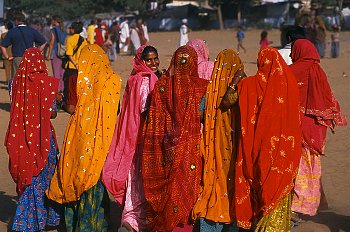
Day 06 : In Jaipur
At 0730 hrs embark for excursion to Amer Fort (Amber Fort is located in Amber (Jaipur), which used to be the capital of the Kachhwaha clan, till Jaipur was made the official capital in 1727. The Amber Fort looks stunning, all-built in white marble and red sandstone. To add to its charm, Maotha Lake makes its foreground. The Amber Fort took its present form during the reign of Raja Jai Singh where you may climb on to the back of an elephant and ascend to the fort as befits a maharajah.
Afternoon lunch at a good restaurant. Afterwards continue with our sightseeing covering Hawa Mahal which stands upright as the entrance to the City Palace, Jaipur. An important landmark in the city, Hawa Mahal is an epitome of the Rajputana architecture. The splendid five-storey “Palace of the Winds” is a blend of beauty and splendor much close to Rajasthan’s culture. Maharaja Sawai Pratap Singh built Hawa Mahal in 1779. The pyramid shape of this ancient monument is a tourist attraction having 953 small windows),
City palace & Museum occupies the centre of Jaipur The City Palace covers one seventh of the city area and the plan of the palace is exactly similar to the plan of the city. The palace has a high wall or the sarahad that surrounds it on all sides.
Jantar Mantar at Jaipur is the largest stone observatory in the World and this feature makes it a special destination for the traveler. Jantar Mantar of Jaipur is one of the five astronomical observatories built by Maharaja Jai Singh, the founder of Jaipur.
Evening, return to hotel for overnight stay.
Note: (One Elephant is for maximum for two people and subject to availability, failing jeeps shall be arranged. On the way back we will take the jeeps only).
Day 07 : Jaipur to Ranthambore by Road (170km approx / 03hrs).
After breakfast, drive to Ranthambore- one of the most famous tiger reserves in India. It is a delight for nature lovers and photographers.
On arrival check into the hotel. Rest of the day at leisure.
Day 08 : In Ranthambore
Early Morning at 05:30hrs enjoy the Morning Jungle Safari by Canter (duration 03hrs approx). Then back to hotel & have breakfast. Rest of the day at leisure. Afternoon at 14:00hrs again proceed for the Evening Jungle Safari by Canter (duration 03hrs). 06 PM Jungle get close.
Evening free to rest & stay Overnight.
Day 09 : Ranthambore to Agra
Travel by train ex Bharatpur, depart 0705/arrive 0925
Early Morning transfer to railway station to board the train towards Bharatpur. On arrival at Bharatpur railway station, transfer to Agra ex Fatehpur Sikri. Check-into your pre-booked hotel.
Later after some relaxation visit Taj Mahal (Taj Mahal built as a monument of eternal love by Shah Jahan to his bride Mumtaz Mahal. The Taj Mahal looks amazingly graceful from almost any angle and it was built over a period of 20 years by 20,000 laborers and craftsmen and displays superb craftsmanship). Our guide will report you at hotel lobby and show you Taj Mahal.
Later return back to hotel for overnight stay.
(Special note : Please note Taj Mahal is closed on every Friday)
Day 10 : Sightseeing in Agra
Morning after breakfasts enjoy sightseeing tour in Agra.
Agra Fort Ever since Babur defeated and killed Ibrahin Lodi at Panipat in 1526, Agra has been an important center of Mughal Empire. Akbar chose this city on the bank of River Yamuna as his capital and proceeded to build a strong citadel for the purpose. It is said that he destroyed the damaged old fort of Agra for the purpose and raised this grand group of monuments instead in red sandstone. Started in 1565, it took eight years and thirty-five lakh rupees to complete its construction and is second only to Taj in Agra. Qasim Khan Mir Barr-u-Bahr supervised the construction of this building. One of the large fortified residences built at various strategic points of Mughal Empire; it had over five hundred buildings, as mentioned by Abul Fazal in his chronicles.
Most of the buildings added later use marble as the chief construction material. At the time of Akbar, River Yamuna touched the fort and thus, a number of ghats were built here. Some of these Ghats were meant to load and unload goods transported through river and other covered passages were for use by the harem inmates only.
Itmad Ud Daulah, also known as the ‘Baby Taj’, is the first monument in India built entirely in marble. The tomb was built between 1622 and 1628 by the Queen of Jahangir, Nurjahan as a memorial to her father, Mirza Ghiyas Beg. Mirza Ghiyas Beg, an Imperial Officer, was bestowed with the title of Itmad-ud-Daulah (Pillar of State) by his Emperor Jahangir. The mausoleum rests in a walled garden close to the Yamuna River, approximately one and a half kilometers upstream of the Taj Mahal, Agra.
This tranquil, small, garden was to inspire the construction of the Taj Mahal in the later years. Along with the main building, the structure consists of numerous outbuildings and gardens. It is a pure white and elaborated carved tomb that conforms to the Islamic style of architecture. It houses the cenotaph of Mirza Ghiyas Beg and Nurjahan’s mother Asmat Begum that resembles a jewel box and is set in a garden side by side. The adjacent chamber has the tombs of the other members of the family. The tomb was built in the famed Char Bagh style that Itmad-ud-Daulah had himself laid out six years before his death 1622. The whole structure gives the impression of an enlarged precious object with a height of 21 m and a dome-roofed octagonal minaret of 12 m each at each corner.
The structure is renowned for its pietra dura decoration i.e. the inlay works and carvings depicting cypresses, wine glasses and an amazing variety of geometrical arabesque. Due to the profusion of intricate work done on marble and the beautiful marble screen-work, the tomb easily qualifies as a veritable forerunner of the famous Taj Mahal).
In the evening witness the Mahobbat e Taj show at Kalakriti.
Day 11 : Agra / Jhansi (By Train) & drive to Khajuraho, En-route visit Orchha village
Morning on transfer to Railway station to board the train towards Jhansi. On arrival, transfer to Orchha village. Orchha is an important destination of North India.
Visit the Jehangir Mahal, an elegant 17th century mansion, Jahanghir Mahal in Orchha is a remarkable structure. The most admired palace in Orchha, the Jahangir Mahal was constructed to commemorate the visit of Jahanghir to Orchha.
Later continue your drive towards Khajuraho.
Evening at sun set time enjoy the Sound & Light show at Western Temples.
The Light and Sound show on the Western Group of temples complex reminds the life and times of the great Chandela Kings and mark out the story of the exclusive temples from the 10th Century to the present day. The 50-minute fascinating show is held in every evening and it runs in Hindi and in English.
On arrival, check in to your pre-booked hotel. Overnight stay at Khajuraho.
The first show is in English that starts at 6.30 pm and the second show is scheduled at 7.30 pm in Hindi.
Day 12 : Khajuraho Sightseeing & Later board your flight to Varanasi
Morning after breakfast proceed for the sightseeing tour of Khajuraho Temples – famous for the magnificent carvings depicting numerous exotic postures of the famous Kamasutra, ancient Indian work on sex. Only 22 temples survive of the 85 originally built.
Later transfer to airport to board the flight towards Varanasi. On arrival check-in to your pre-booked hotel for relaxation.
Later in evening enjoy the Common Boat ride in Varanasi. Overnight stay at the hotel.
Day 13: In Varanasi
After breakfast, proceed for the full day sightseeing of Varanasi.
Later today we take an excursion to Sarnath (Sarnath, about 10 km from the holy city of Varanasi, is the place where Buddha chose to deliver his first sermon. The celebrated Mantra, ‘Buddham Sharanam Gachhami’, owes its origin to Sarnath. On the day before his death Buddha included Sarnath along with Lumbini, Bodh Gaya and Kushinagar as the four places he thought to be sacred to his followers. It makes Sarnath one of the most venerated Buddhist places.
Besides Buddhism, Sarnath is also connected with Jainism. There are many Buddhist monuments and edifices in Sarnath. Some of the important Buddhist monuments at Sarnath are the Dhamekha stupa, the Chaukhandi stupa and monasteries and temples of different schools of Buddhism from Japan, China, Thailand, Burma and others.
The Mahabodhi Temple within the park has a tooth relic of the Buddha.
The Ashoka pillar of Sarnath is the National emblem of India, the site of the deer park where Gautama Buddha is said to have given his first sermon about the basic principles of Buddhism. Sarnath has been a premier centre for Buddhism & has a rich collection of ancient Buddhist relics & antiques comprising numerous Buddha & Bodhisattva images on display at the Archaeological Museum.
Evening back to hotel & rest of the day at leisure for personal activities. Stay Overnight.
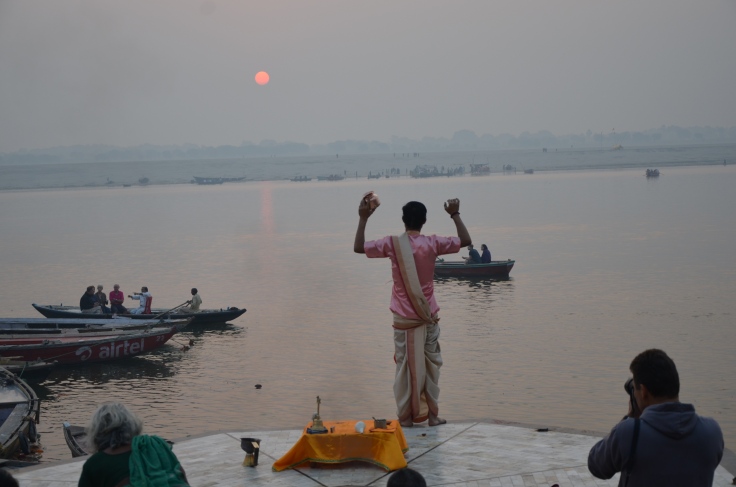
Day 14 Varanasi to Goa (by flight). Goa is an Optional Add-on.
Morning transfer to airport to board the flight towards Goa. On arrival, transfer to the reserved hotel in Goa. Evening free for relax and leisure. Evening return to hotel for overnight stay. Those who wish to end the tour in Varanasi will continue to Mumbai then New Delhi to pick up your international flight.
Day 15 : In Goa
After breakfast proceed for Old Goa sightseeing tour. Later Enjoy spice plantation tour. Return back to the resort and spend evening by the beach. Overnight will be resort.
Day 16 : In Goa
Full day at the resort for golfing and relaxation on the beach. Overnight stay at the hotel.
Day 17 : Departure from Goa to Mumbai/New Delhi.
Mumbai is an Optional Add-on.
Morning after breakfast you will transfer to Goa airport to connect your flight home via Mumbai / Delhi for your onward connection.
The optional add on is to spend a few days in Mumbai to explore this beautiful city, take a boat to the Elephanta Caves, visit great restaurants and shop up a storm in the markets.


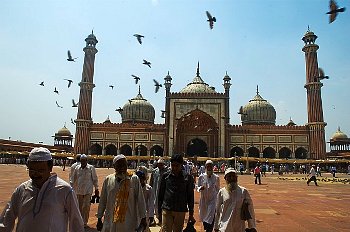

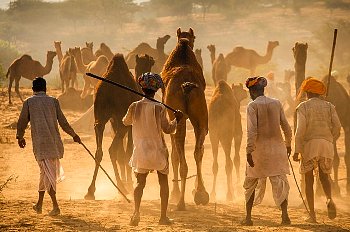




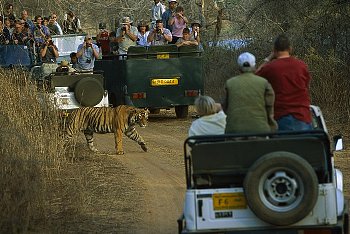

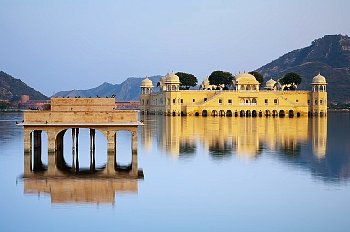



Leave a comment